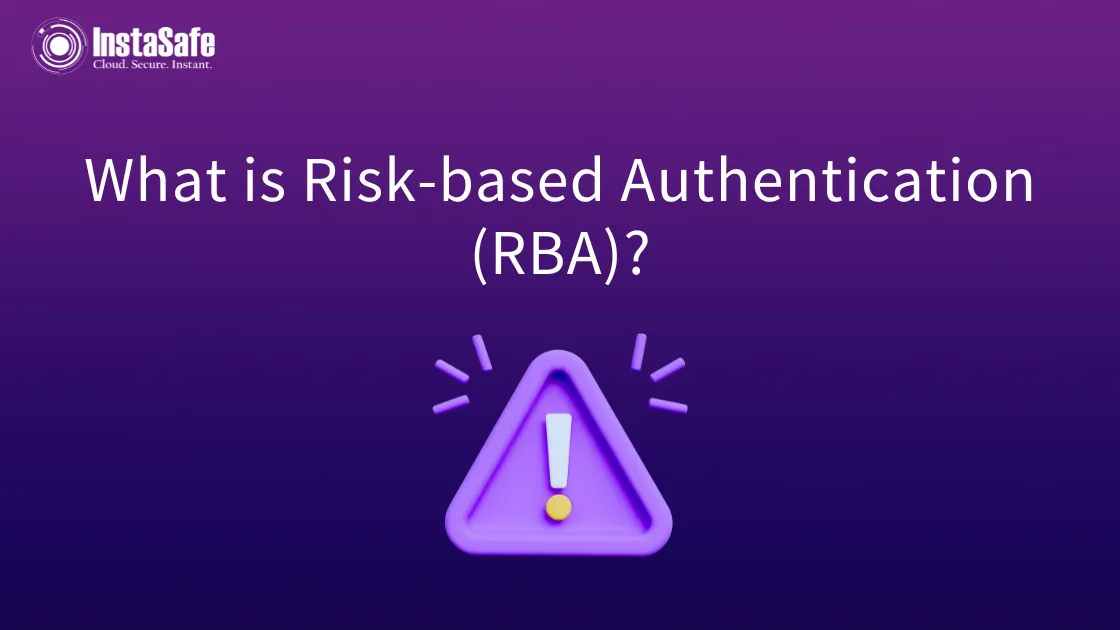What is Risk-based Authentication (RBA)?

In early 2021, one of every 140 login attempts was an account take-over or ATO attempt. The average successful ATO results in losses of approximately $12,000.
If an attacker manages to take over your account, their first step is to alter the username, password, and notification settings to gain complete control.
This is one of several points at which Risk-based Multi-Factor Authentication can detect fraudsters.
Now that we recognise the gravity of Risk-based Authentication let's explore what it entails in this guide.
Meaning of Risk-Based Multi-Factor Authentication
Risk-based Authentication refers to applying many levels of strict authentication methods. It is based on the assumption that access to a given system may result in its being attacked.
The authentication process considers various factors to determine the risk level of a transaction, such as
- time of day,
- location,
- device and browser information,
- IP address,
- user information, and
- the context of the request.
Users may be prompted for a second authentication factor if the perceived risk is high. But if the calculated risk is low, users can have a smooth experience without interruptions.
For instance, if a user is on the same company device and network during regular working hours, they might not need to re-enter their login information when their session expires.
Risk-Based Authentication Examples
If you've ever tried accessing your bank account remotely and were prompted to answer more security questions than usual, you may have encountered Risk-based Authentication in action.
Risk-based Authentication (RBA) can be seen in everyday scenarios. For instance, if you get an email saying that you have logged into a service from a new device but haven't, you can contact the service to limit the risk.
Similarly, when you try to log into your online bank account from a new device or location, the system may require additional authentication, like a one-time password sent to your phone or email, to reduce the risk of unauthorised access.
How do Risk-Based Authentication Solutions Work?
Risk-based Authentication solutions let IT professionals and security teams check when more or fewer authentication steps are needed based on access policies.
These teams can choose the threshold at which authentication should be increased and specify which methods to use. Sometimes, they can even set different authentication methods for specific users or applications to enhance security.
The risk score increases when a user's login behaviour is not typical. The more the risk score, the more authentication levels are required to ensure safety.
Risk-Based Authentication Factors
Risk-based authentication is one of the most critical security measures, as it works in real time. The security measures use the holistic approach to determine if the account is compromised.
Some of the factors that RBA uses to analyse the access are listed below:
- IP Restriction - The very factor is checking the user's IP. It simply means if the user is accessing from known IPs or using a new one.
- Location - It is verified by accessing the user's location. If the user logs in from the exact server location or a different one.
- Device - Another factor into consideration is if the user is accessing from a known device or using a different one.
- Time - Lastly, RBA also analyses a user's access based on their timezone.
Benefits of Risk-Based Authentication
Improved Security
As discussed above, risk-based authentication is a safe method of authentication that examines risk levels related to login attempts and adjusts the authentication accordingly. This ability of RBA prevents unauthorised access to systems that may result in data theft.
Enhanced User Experience
Out-dated authentication methods can be cumbersome for users, particularly when they need to perform unnecessary authentication steps. Risk-based authentication minimises some irrelevant authentication steps, reducing user friction and augmenting the user experience.
Cost-Effective
Risk-based authentication can be a more cost-effective option than traditional authentication processes. This can be especially helpful for smaller to medium-sized businesses that may need more resources to incorporate advanced authentication methods.
Greater User Satisfaction
RBA offers a more seamless and convenient user journey by customizing the authentication method to the risk level linked to user login attempts. This flexibility can increase user satisfaction and decrease the chances of users avoiding security steps.
Fraud Prevention
With alert notifications and many verification mechanisms, a Risk-based authentication solution reduces the chances of online fraud and improper access.
The Power of Multi-Factor Authentication in Mitigating Risks
Multi-Factor Authentication (MFA) is a security approach that uses two or more types of authentication to verify a user's identity.
MFA is designed to improve security by adding multiple factors to the authentication process. Here, three types of authentication factors are commonly used in MFA: knowledge, possession, and inherence.
Knowledge-based authentication (something you know) requires users to provide information, such as a password, PIN, or answers to secret questions.
Possession-based authentication (something you have) involves verifying a specific item the user has in their possession, such as One-Time-Password (OTP) and SMS.
Inherence-based authentication (something you are) verifies a user's inherent characteristics, such as biometric features like retinal scans, fingerprint or facial recognition, and voice recognition.
Final Words
During times when security threats are always on the rise, incorporating Risk-Based Multi-Factor Authentication into your system is a must to maintain trust with your customers.
Multi-factor Authentication by InstaSafe Solutions is considered a highly effective security measure. The solution involves multiple layers of verification to confirm the identity of users trying to access your system.
This type of verification makes it tricky for cybercriminals to gain unauthorised access, as even if they manage to steal one credential, they will still need to provide additional forms of identification.
Frequently Asked Questions About Risk-Based Authentication
- What are the types of risk-based authentication?
Risk-based authentication is divided into two types which are transaction-dependent and user dependent.
2. How do you implement Risk-based Authentication?
The mechanism of RBA involves following the challenge and response process after entering the username and password. The challenge is simply the query raised to verify the identity, and the response is the answer to that query.
3. How does risk-based authentication improve security?
It uses contextual information such as location, device, history and more to determine the risk associated with a particular authentication request.
4. What industries are adopting risk-based authentication?
Some verticals adopting RBA are manufacturing, telecommunication, BFSI, healthcare and more.
5. What is a risk-based MFA?
Risk-based authentication uses various stringencies to verify if the system is being compromised or not. And if everything seems fine, then only grant access.
Key Products
MFA | I&AM | ZTNA | Zero Trust Application Access | Secure Enterprise Browser
Key Features
Single Sign On | Endpoint Security | Device Binding | Domain Joining | Always On VPN | Contextual Based Access | Clientless Remote Access | Device Posture Check
Key Solutions
VPN Alternatives | DevOps Security | Cloud Application Security | Secure Remote Access | VoIP Security
